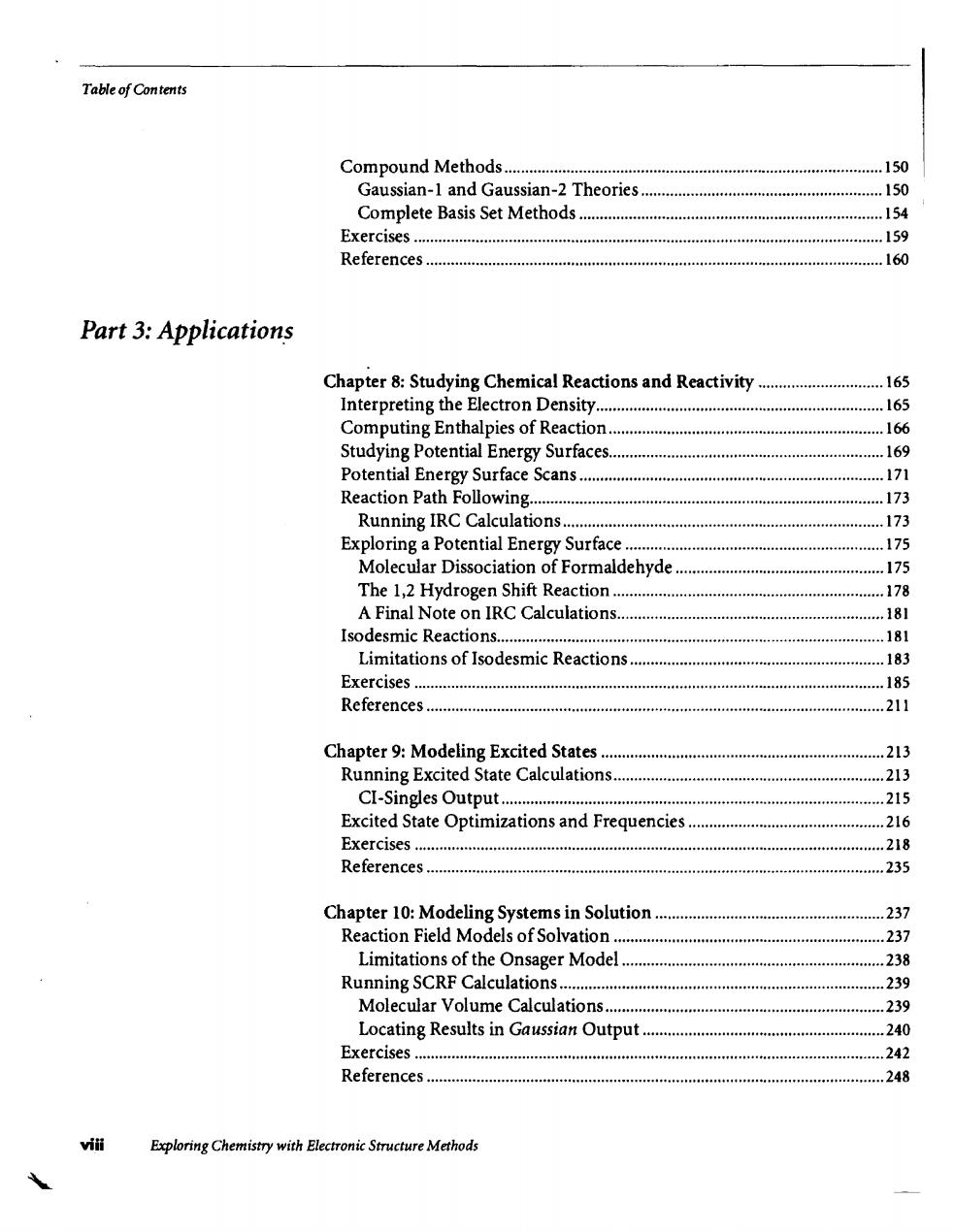正在加载图片...

Table of Contents Compound Methods............... .150 Gaussian-1 and Gaussian-2 Theories .150 Complete Basis Set Methods 154 Exercises .159 References.… .160 Part 3:Applications Chapter 8:Studying Chemical Reactions and Reactivity .....165 Interpreting the Blectron Density...165 Computing Enthalpies of Reaction..166 Studying Potential Energy Surfaces......... .169 Potential Energy Surface Scans...171 Reaction Path Following............. .173 Running IRC Calculations................ .173 Exploring a Potential Energy Surface....... .175 Molecular Dissociation of Formaldehyde.................................175 The 1,2 Hydrogen Shift Reaction............ .178 A Final Note on IRC Calculations............. ,181 Isodesmic Reactions.............. 181 Limitations of Isodesmic Reactions.183 Exercises... …185 References.… .211 Chapter 9:Modeling Excited States .213 Running Excited State Calculations................. .213 CI-Singles Output...... .215 Excited State Optimizations and Frequencies................ …216 Bxercises. …218 References… …235 Chapter 10:Modeling Systems in Solution... 237 Reaction Field Models of Solvation....237 Limitations of the Onsager Model....... 238 Running SCRF Calculations........... 239 Molecular Volume Calculations.... 239 Locating Results in Gaussian Output 240 Exercises… .242 References… .248 viii Exploring Chemistry with Electronic Structure MethodsTable ofCon tents Compound Methods 150 Gaussian-l and Gaussian-2 Theories 150 Complete Basis Set Methods 154 Exercises 159 References 160 Part 3: Application.s Chapter 8: Studying Chemical Reactions and Reactivity 165 Interpreting the Electron Density 165 Computing Enthalpies of Reaction 166 Studying Potential Energy Surfaces 169 Potential Energy Surface Scans 171 Reaction Path Following 173 Running IRC Calculations 173 Exploring a Potential Energy Surface 175 Molecular Dissociation of Formaldehyde 175 The 1,2 Hydrogen Shift Reaction 178 A Final Note on IRC Calculations 181 Isodesmic Reactions 181 Limitations of Isodesmic Reactions 183 Exercises 0 185 References 211 Chapter 9: Modeling Excited States 213 Running Excited State Calculations 213 CI-Singles Output 215 Excited State Optimizations and Frequencies 216 Exercises 218 References 235 Chapter 10: Modeling Systems in Solution 237 Reaction Field Models ofSolvation 237 Limitations ofthe Onsager Model 238 Running SCRF Calculations 239 Molecular Volume Calculations 239 Locating Results in Gaussian Output 240 Exercises 242 References 248 viii Exploring Chemistry with Electronic Structure Methods